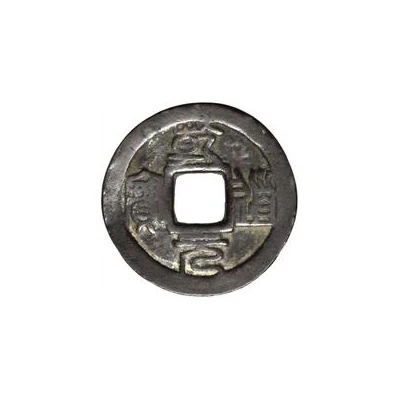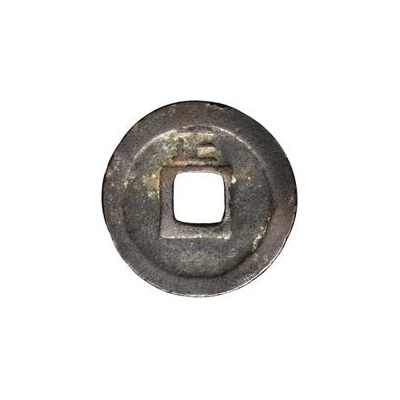2 Cash - Qiandao Yuanbao; Seal script; Zheng; iron ND
| Iron | - | 29 mm |
| Issuer | Empire of China |
|---|---|
| Emperor | Southern Song dynasty › Xiaozong (宋孝宗) (1162-1189) |
| Type | Standard circulation coin |
| Years | 1170-1173 |
| Value | 2 Cash |
| Currency | Cash (621-1912) |
| Composition | Iron |
| Diameter | 29 mm |
| Shape | Round with a square hole |
| Technique | Cast |
| Orientation | Medal alignment ↑↑ |
| Demonetized | Yes |
| Updated | 2024-10-03 |
| Numista | N#218484 |
|---|---|
| Rarity index | 100% |
Reverse
One Chinese ideogram above and one dot below.
Script: Chinese (traditional, regular script)
Lettering: 正
Translation:
Zheng
[Uncertain mint]
Edge
Plain
Comment
It is uncertain which mint used this mintmark. With this mintmark appearing on both iron and bronze pieces, it is possible these coins were produced at the Old Yidu Mint in Sichuan, which likely casted both compositions after it reopened in 1129.The Old Yidu Mint diffinitely casted bronze pieces, which had the mintmark Chuan for Sichuan. And with this being a Sichuan mint, it is possible this mint also produced iron pieces. While this mint's old mintmark was Chuan, that was back in 1129-1130. With that being so many years ago, they may have changed their mintmark for an uncertain reason (possibly wanting something less generic than a mark for Sichuan).
Interesting fact
One interesting fact about the Standard circulation coin 2 Cash - Qiandao (Yuanbao; Seal script; Zheng; iron) ND (1170-1173) from Empire of China made of Iron is that it was used as a form of currency during the Song Dynasty, which was a time of great economic growth and cultural achievement in China. The coin's design features a seal script character for "Zheng," which represents the imperial government, and the iron material was a symbol of strength and durability. Despite being made of a less valuable metal than other coins, the Qiandao coin was widely accepted and used in trade, demonstrating the trust and confidence people had in the Chinese monetary system during this period.

